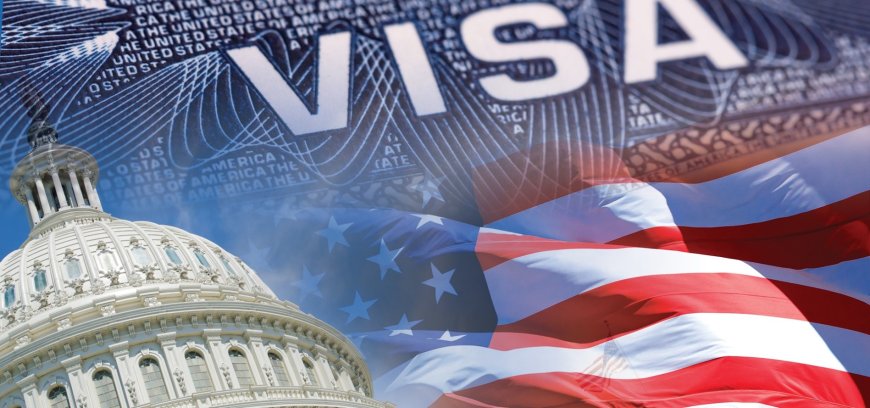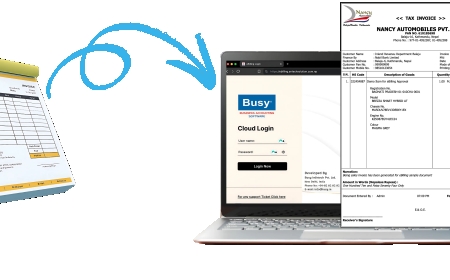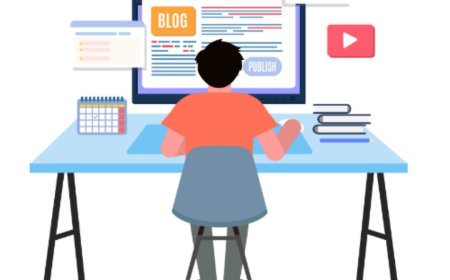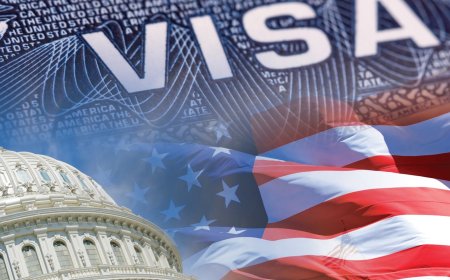Why Is the USCIS Priority Date So Important for Green Cards?
Your USCIS priority date may seem like just a number on a piece of paper, but in truth, it’s one of the most important details in your green card journey.

The dream of becoming a permanent resident of the United States brings hope to millions of people around the world. But between filing your petition and finally receiving your green card, theres a silent yet crucial detail that can determine how long you wait: your USCIS priority date. This one date carries more weight than many applicants realize, often deciding when you're eligible to take the next big step.
If you've ever found yourself asking, What is a USCIS priority date and why does it matter?youre not alone. Lets walk through it together in simple terms.
What Is a USCIS Priority Date?
Your USCIS priority date is the official date when your green card petition is received by U.S. Citizenship and Immigration Services. In other words, its your place in line. Think of it like waiting at a deli counteryou grab a number, and your turn comes when that number is called.
For example, if your employer or family member files a petition on your behalf on April 5, 2025, then April 5 becomes your priority date. That date stays attached to your application and is used to figure out when youre allowed to move forward.
Why Is the Priority Date So Important?
Each year, there are limits on how many green cards can be issued. These limits vary based on visa categories (family-based or employment-based) and your country of origin. Because of this, most people cant get a green card right awayeven if their petition is approved.
This is where your USCIS priority date becomes essential. Once your priority date becomes current, based on U.S. government guidelines, its your turn to take the next stepwhether its applying to adjust your status or going for an interview at a U.S. embassy.
Where Do You Find Your Priority Date?
Youll find your USCIS priority date on the receipt notice you get after your petition is submitted. This form is called Form I-797, and it clearly lists the date your case was received. Keep this notice safeits a key document in your immigration journey.
Who Needs to Worry About Priority Dates?
Not everyone has to stress about waiting. If youre an immediate relative of a U.S. citizen (spouse, unmarried child under 21, or parent), youre luckyyour category isnt subject to annual limits, so your priority date becomes current almost immediately.
But if you fall into one of the preference categories (like siblings of U.S. citizens or workers sponsored by a company), then yesyoull need to track your priority date closely.
How Does the Visa Bulletin Work?
To know when your priority date becomes current, youll need to check the Visa Bulletin, which is published monthly by the U.S. Department of State. This bulletin has charts showing how far immigration has progressed in each category and country.
There are typically two important charts:
-
Final Action Dates When USCIS or the embassy can approve green card applications
-
Dates for Filing When you can submit your application early, even before your green card is issued
To use the bulletin, look up your visa category and country of chargeability (usually your country of birth), then compare the dates listed to your own USCIS priority date.
If your date is earlier than the posted date, congratulationsyour case is current and you can move forward.
Example: How It All Comes Together
Lets say youre from India, and your employer filed a petition for you in July 2020. That means your priority date is July 2020. Now lets say the current Visa Bulletin shows that USCIS is processing employment-based petitions from India with a priority date of April 2020. In this case, you still need to wait. But if the bulletin says August 2020, then youre in the clear and can proceed.
Why Do Some People Wait Longer Than Others?
The U.S. green card system has limits per category and per country. If youre from a country with high immigration numbers (like India, Mexico, or the Philippines), your wait time will likely be longer.
Some family-based categories, like siblings of U.S. citizens, can take 1020 years. On the other hand, a spouse of a U.S. citizen from Canada may get through the process in under a year.
It may seem unfair, but its all part of how the immigration system is structured.
What to Do While Waiting for Your Priority Date
Waiting for your USCIS priority date to become current can be hard. But you can use this time wisely:
-
Keep your contact info updated with USCIS
-
Monitor the Visa Bulletin every month
-
Stay organized with copies of all important documents
-
Prepare financially for fees, legal support, or travel
-
Follow immigration news to stay aware of changes that may affect your case
Being ready means you wont waste precious time once its finally your turn.
What Happens When Your Priority Date Is Current?
When your USCIS priority date becomes current:
-
If youre inside the U.S., you can file Form I-485 to adjust your status to permanent resident
-
If youre outside the U.S., youll complete your process through consular processing, usually involving an interview at a U.S. embassy or consulate
You may also receive communication from USCIS asking for updates, additional forms, or to schedule biometrics appointments.
Can Your Priority Date Be Lost or Changed?
Generally, your priority date stays the same throughout the process. If your petition is denied or withdrawn, you may lose that date. However, if you file a new petition in the same category, USCIS sometimes allows you to retain your original dateespecially for employment-based petitions.
Its always a good idea to talk to a qualified immigration advisor if your case involves a change in sponsor or other unexpected situations.
Can You Speed Up the Process?
Most of the time, no. Your priority date depends on visa availability, and theres no shortcut around that. However, in certain rare cases, you may qualify for faster processing:
-
Premium processing for certain employment petitions
-
National interest waivers for individuals whose work benefits the U.S.
-
Humanitarian reasons or urgent medical needs
Each case is unique, so youll need to consult with an expert to see if you qualify.
Final Thoughts: The Date That Determines Your Future
Your USCIS priority date may seem like just a number on a piece of paper, but in truth, its one of the most important details in your green card journey. Its what tells you when your time has come, and it helps immigration officials manage the flow of green card approvals fairly and consistently.
Even if the process feels long, remember that thousands of people reach their goals every year. By understanding your priority date, keeping up with the visa bulletin, and staying ready, youre giving yourself the best chance of success.
Immigration may be a slow journey, but with patience and preparation, youll reach your destination. And when that long-awaited green card arrives, all the waiting will be worth it.
Related Posts
McBean Immigration Consulting Inc
substanceabousevio... Jul 17, 2025 3
ОСАГО онлайн орқали суғурта қилиш усуллари
emma32 Jul 16, 2025 4
































